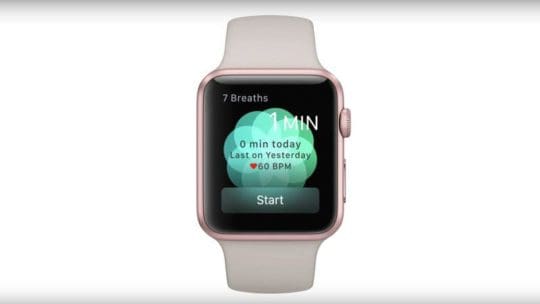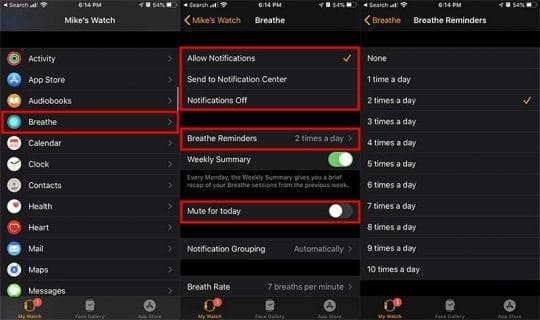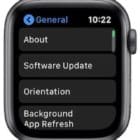Is your Apple Watch telling you to breathe all of the time? You’re not alone. Breathe reminders are a basic part of the Apple Watch experience — but it seems that users may have more questions than answers about it.
For example, does the Breathe app know when you’re stressed or is it random? And how do you turn it off if you find it annoying or unhelpful? Here’s what you need to know about Breathe.
Related:
- 12 ways to fix when your Apple Watch is unable to install watchOS updates
- Future Apple Watch could respond to hand movements and gestures for interaction
- Should you buy an Apple Watch for an elderly loved one?
Contents
What are Breathe notifications on Apple Watch?

Breathe notifications come from the Breathe app, which is a native app on watchOS created by Apple. Essentially, it’s a guided meditation app that walks users through a short mindful breathing session.
The app itself is pretty simple and actually rather beautifully designed, with a blue flower that slowly opens and closes to guide users through a single breath.
Users can tweak Breathe sessions by duration and number of breathes per minute. Breathe sessions, or so-called “mindful minutes,” show up in the Health app when you complete these sessions.
The Breathe app will also display your heart rate at the end of a session. Ideally, the goal is for it to be lower than when you started, but that isn’t necessarily the point of the app.
As for why Apple added Breathe into the mix, it’s all part of the company’s focus on health and wellbeing. Mindful breathing is associated with a range of benefits, from reduced stress levels to lowered blood pressure.
In other words, taking a moment each day to open up the Breathe app and go through a short session is probably a good idea.
The Breathe notifications, on the other hand, may be a slightly different story for some Apple Watch owner.
Does Breathe on Apple Watch know when you’re stressed?

Many Apple Watch owners can probably attest to the fact that their Breathe notifications often appear when they’re stressed out or otherwise anxious.
Unfortunately, however, it doesn’t seem like the Apple Watch can knows when a user is stressed (despite the fact that it would theoretically be able to see an elevated heart rate).
Apple’s own documentation only notes that Breathe reminders occur at set times throughout the day. The company has never acknowledged Breathe reminders being tied to stress.
More than that, if the notifications were actually tied to stress levels, it would be a pretty cool feature. Apple would undoubtedly tout it or at least include notes about it in its documentation.
On the other hand, Apple notes that Breathe notifications are automatically rescheduled if a user is moving, exercising, or if they start a session on their own. That means Breathe reminders will often occur after you get done exercising, or they’ll appear when you have a moment of stillness after moving.
To put it another way, Breathe notifications occur periodically throughout the day — they aren’t tied to stress levels. Any Breathe notification that pops up when you’re stressed is just a coincidence.
How to turn off Breathe notifications on Apple Watch

As we’ve mentioned, mindful breathing or meditation is a good way to reduce your stress throughout the day. But those nagging Breathe reminders may not be.
That’s especially true if your Breathe reminders are manually set to a large number. You’ll probably receive some Breathe reminders at inopportune moments. (Beyond that, it can be annoying to expect a text but see a Breathe reminder instead.)
Luckily, you can edit the number of Breathe notifications you get on your Apple Watch — or even whether or not you get them at all. Here’s how.
- Open the Watch app on your iPhone.
- Scroll down and tap Breathe, which you can find underneath the My Watch tab.
- Tap Breathe.
From here, you can set Breathe reminders to be Allowed or Sent to Notification Center (which won’t ping your Apple Watch). You can also just turn them off entirely by tapping Notifications Off.
You can also reduce the number of Breathe notifications you receive throughout the day, which is handy if you like getting a reminder but don’t want to be bombarded. Just tap Breathe Reminders and select the number you want (from zero to 10 a day).
There’s also the option to Mute for today within the Breathe menu. That will leave your Breathe reminders alone generally but will stop them from pinging you on a specific day.
Lastly, if it’s purely just the haptic feedback that’s getting you done about Breathe reminders, you can also set its haptics to None or Minimal.

Mike is a freelance journalist from San Diego, California.
While he primarily covers Apple and consumer technology, he has past experience writing about public safety, local government, and education for a variety of publications.
He’s worn quite a few hats in the journalism field, including writer, editor, and news designer.










There is a great app for iOS “Stress Radar” that helps to understand yourself and manage your stress. It uses heart data from Apple Health and calculates your stress level based on the metrics like HRV SDNN, PNN25, PNN50, SDRR, etc. All these calculations are done by ML Model that you can train and make it personal. “Stress Radar” requires Apple Watch to work with. I like this app – it gives great insight and helps to understand yourself better. Download and try!